What to Do at Petroglyph National Monument
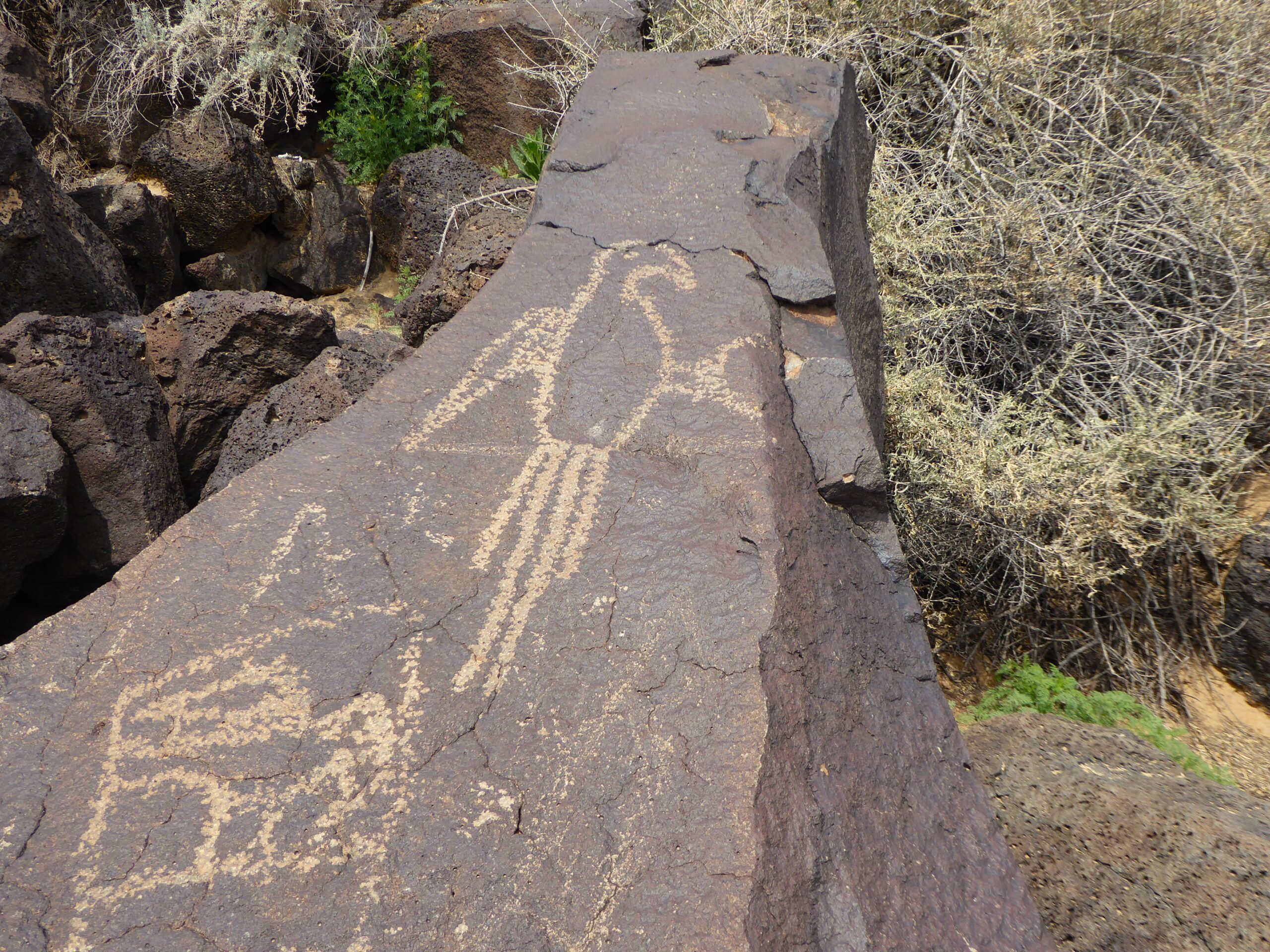
We all want to leave a story for those who come after us. It’s an innate instinct. Whether through words, music, or art, we want to leave something of value for those who come after us. Throughout the ages, humans have left a record with petroglyphs.
New Mexico has hundreds of petroglyphs dating back from hundreds years and more. Today, you can see these preserved etchings in black rock at Petroglyph National Monument.
About Petroglyph National Monument
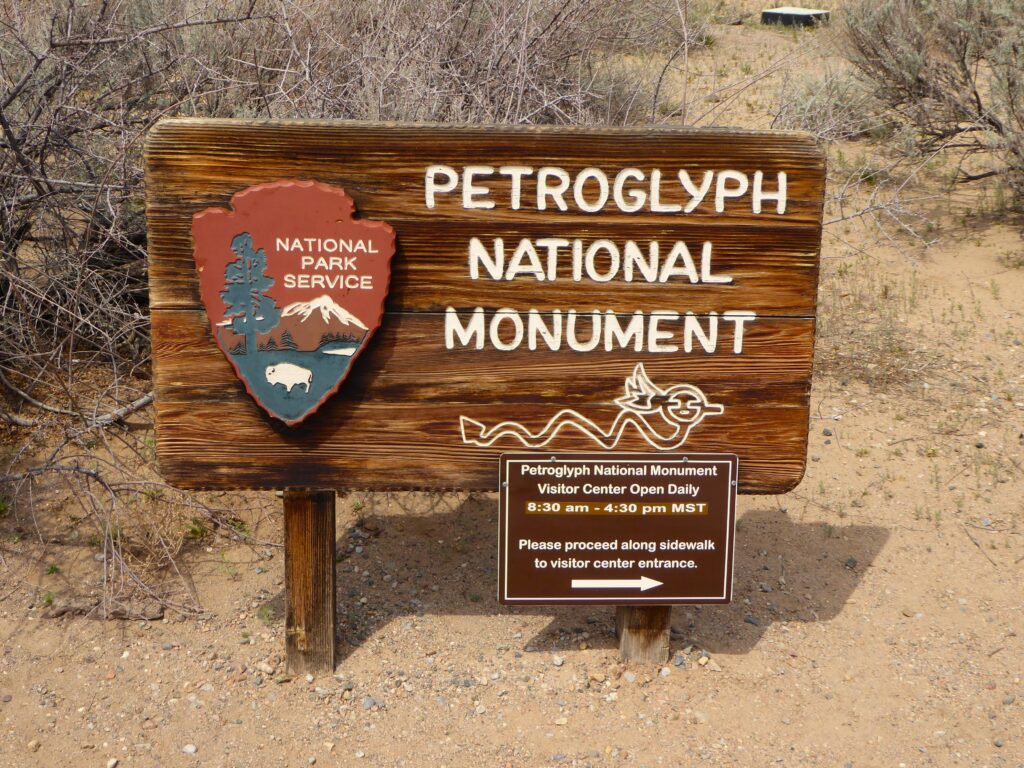
Petroglyph National Monument is located in Albuquerque, New Mexico. The park’s sites are open daily from 8:30 a.m. to 4:30 p.m. Last entrance time is 4 p.m. The park is free to visit.
The monument preserves one of the largest petroglyph regions in the U.S. with etching carved some 400-700 years ago.
The majority of the glyphs can be seen along three trails within the park.
The Visitors Center

The Petroglyph visitors center is a drop off point to get maps and information from the park rangers. There are no petroglyphs at the visitors center.
At the center you can get maps and Junior Ranger books. The visitors center also has a small gift shop.
After gathering your bearings at the visitors center, you’ll head out to one of four regions with trails to explore.
Why Petroglyphs?
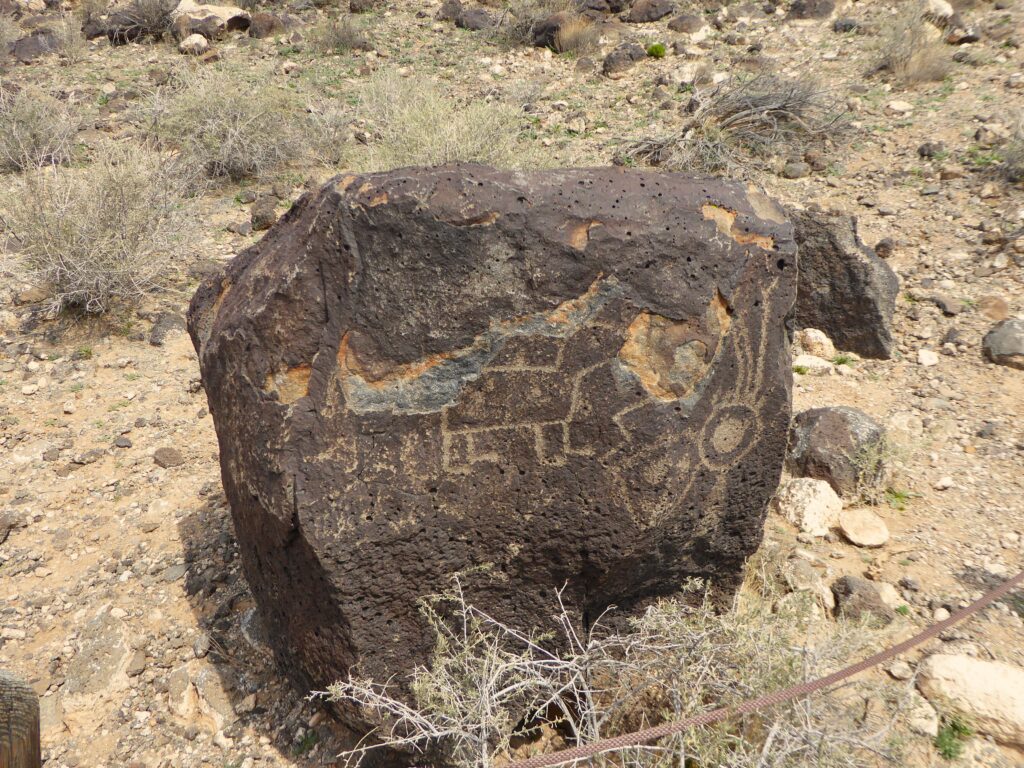
Today’s New Mexico was once a region with many volcanos. The volcanos spewed a lava that – once hardened – became a black basalt rock. The rock lies littered over the Northern New Mexico landscape.
The black basalt became the canvas for an Ancestral Pueblo peoples to carve images. They used a sandstone chisel to remove the top layer of the rock, exposing a lighter interior color.
The glyphs have a special spiritual significance to the modern Pueblo. They also are important to the Navajo and Apache.
Deciphering Petroglyphs
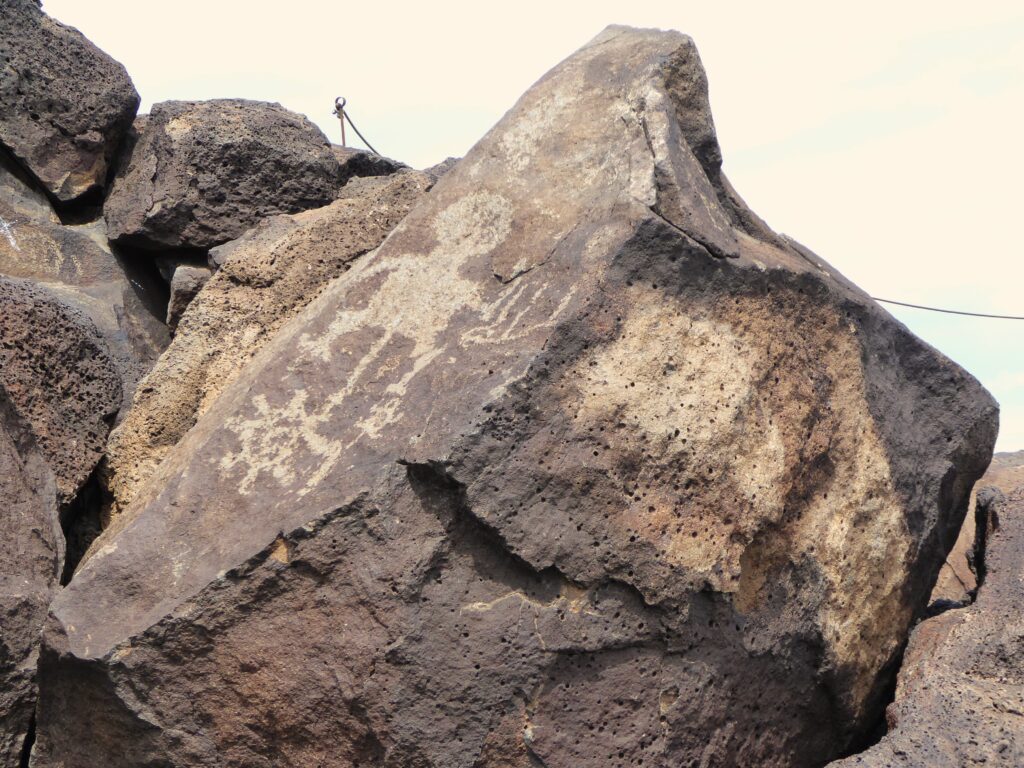
While some of the etchings are identifiable, others are undecipherable to the modern eye. However, many Pueblo peoples do understand the meaning of the symbols.
But, why were they created?
Their creation could be a spiritual reason. Some Indigenous Americans believe volcanic landscapes to be sacred areas.
But, there could be more practical reasons for the petroglyphs. They could mark historical events. They could mark trade routes. Or, they could be a form of communication known to the creators and lost to us today.
The Volcanoes
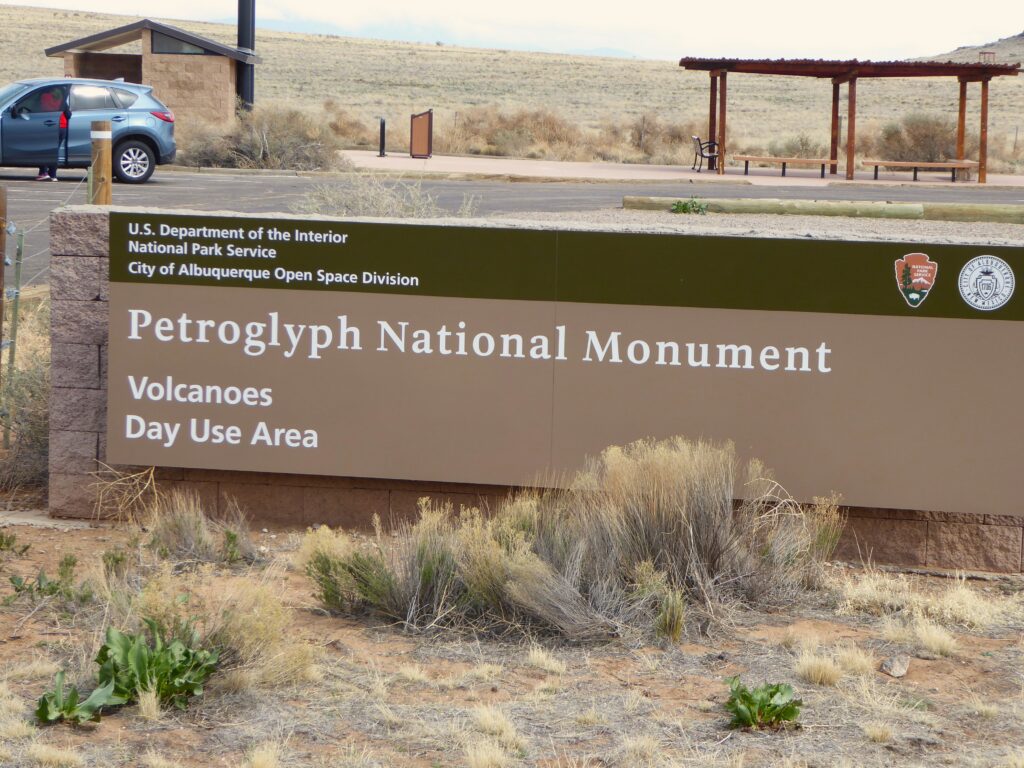
You wouldn’t know it to look around today, but millions of years ago Albuquerque was a hotbed of volcanic activity. In fact, a number of dormant peak lie within the boundaries of Petroglyph National Monument.
These volcanoes left a black basalt rock strewn around the surrounding area.
While most visitors to the site visit the three trails with petroglyphs, you may walk trails around three of the dormant volcanoes. The drive to the volcanoes takes you past the visitors center and trails (and honestly, is a bit out of the way). However, once there, you can hike around the peaks and learn about the volcanic activity in the area.

While the petroglyph trails were well traversed, the volcano trails were abandoned when we visited. Perfect for a quiet hike for just you or your family.
Collect stamps from each National Park Site with this Passport to the National Parks.
Boca Negra Canyon
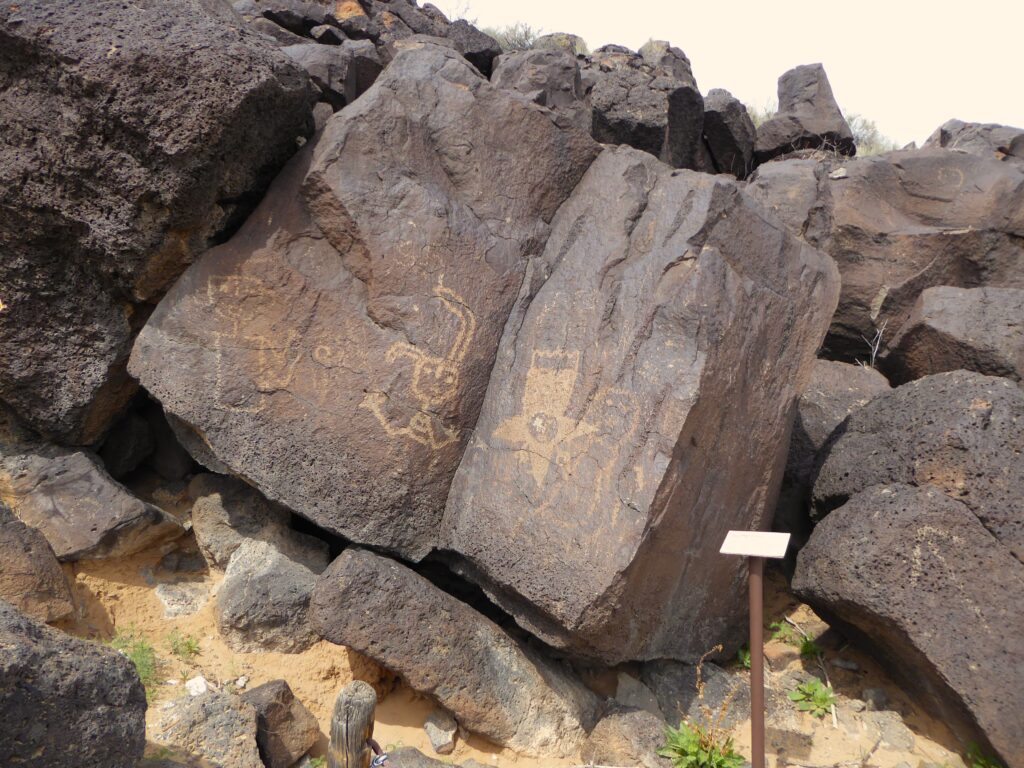
We visited two of the three canyon trails during our visit to the Monument. Our first stop was Boca Negra Canyon Trail.
This is the only trail in the park with an entry fee. It cost $1 per car for parking. The trails are cooperatively maintained by the National Park Service and the City of Albuquerque.
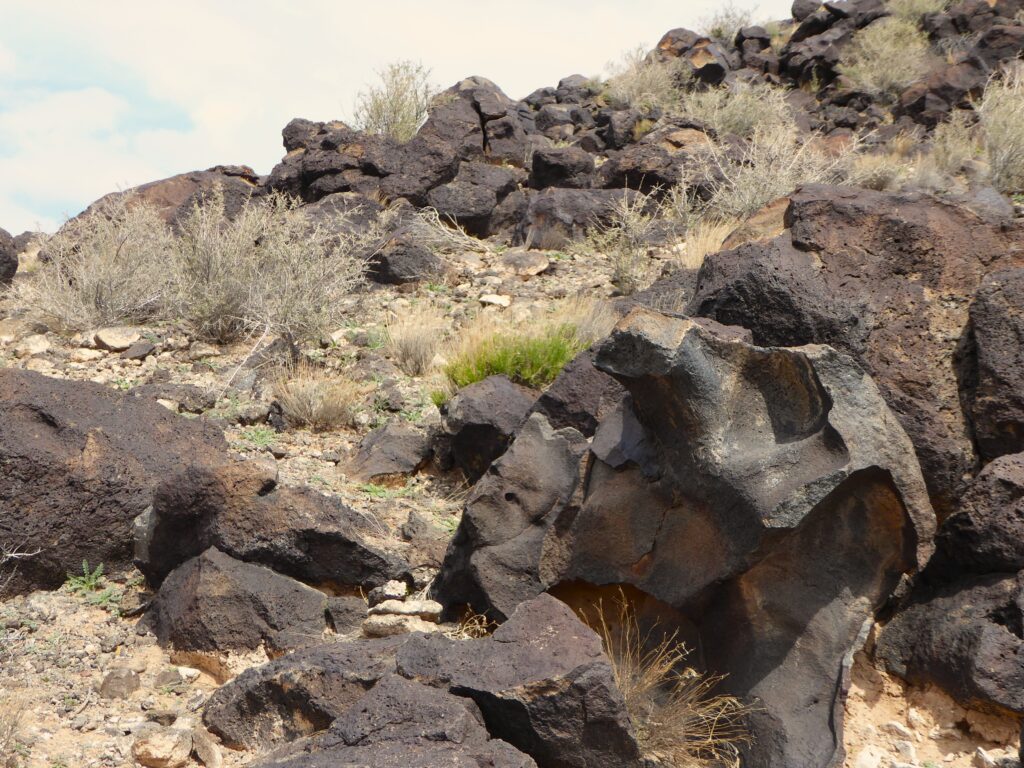
Boca Negra Canyon actually has a number of trails to access. The most grueling, straight up a hill, is not wheelchair or stroller accessible. It requires some stamina and sure footing. You have a steep climb over some uneven and rocky surfaces. While there is a dirt trail of sorts, there are times when the trail disappears and you must climb on or over rocks and boulders. Fortunately, these are not the stones with ancient drawings.
There are around 100 glyphs etched into the volcanic rock along the trail.
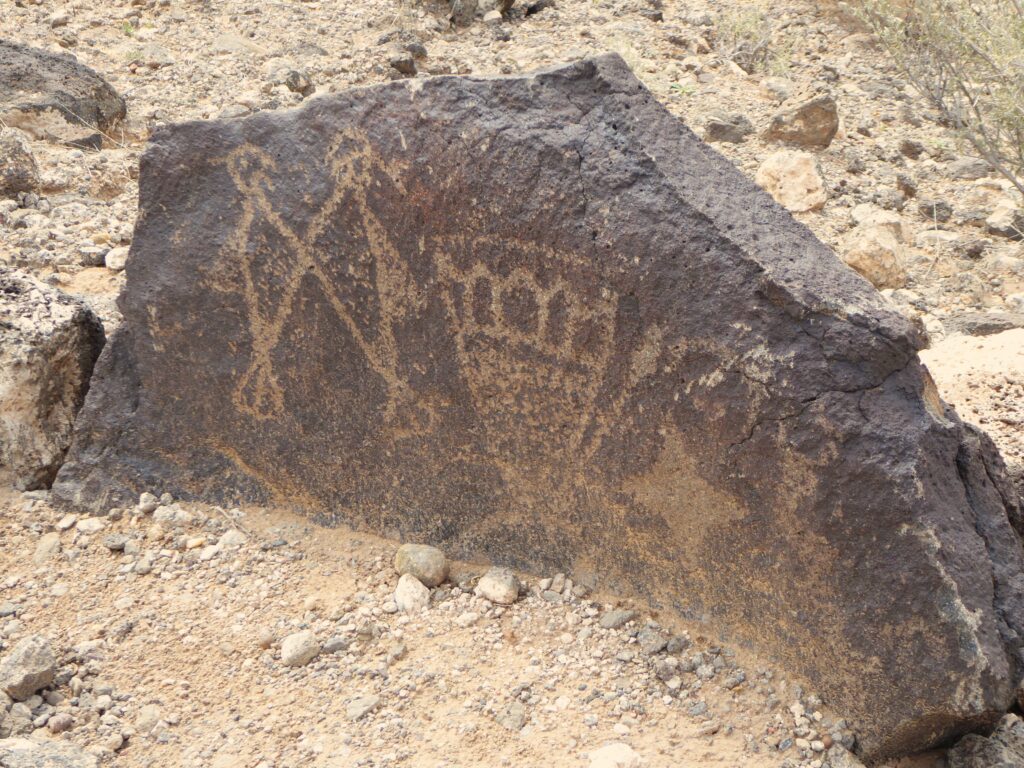
We spent most of our time along this trail. There were numerous spots to admire the glyphs. We also read about the formation of the valley, the creation of the petroglyphs, and the history of the Pueblo people who created the artwork (some of which is some 700 years old).
Upon reaching the top of the hill, we enjoyed a great overlook of Albuquerque.
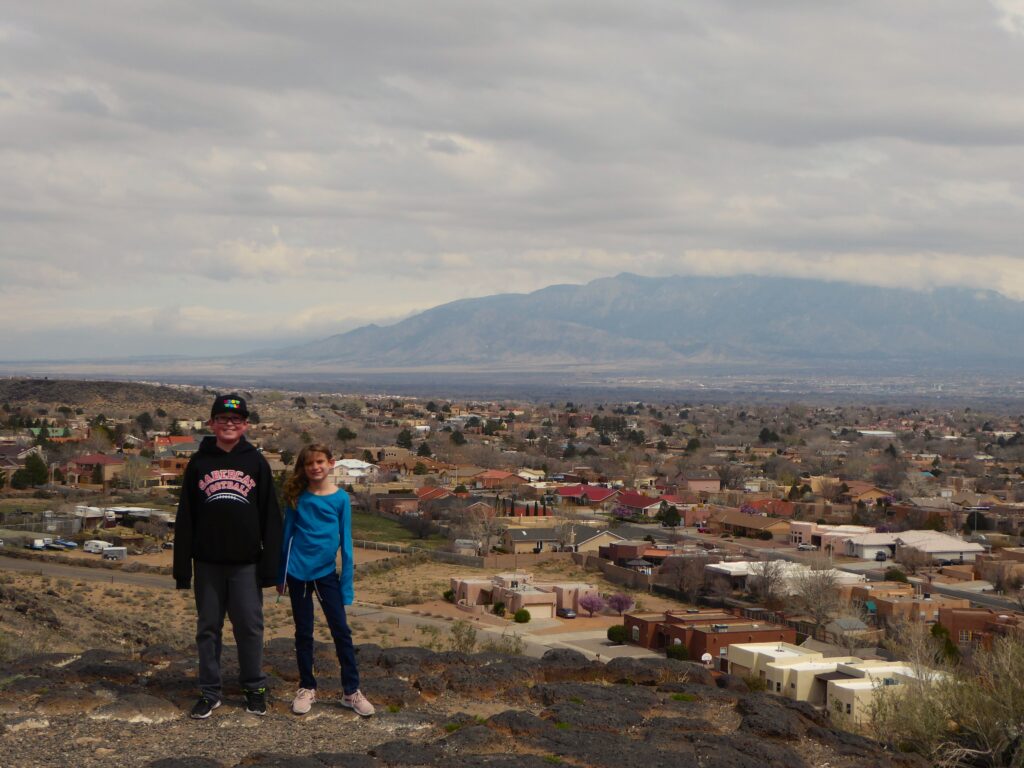
Many of the glyphs face South or Southeast. Although the reason is unknown, some conjecture that the orientation could be so that the etchings face the morning sunrise. Others believe the direction could be because the south facing rocks would have been warmer during the colder, winter months. The warmer conditions would make carving easier for the artists.
Piedras Marcadas Canyon
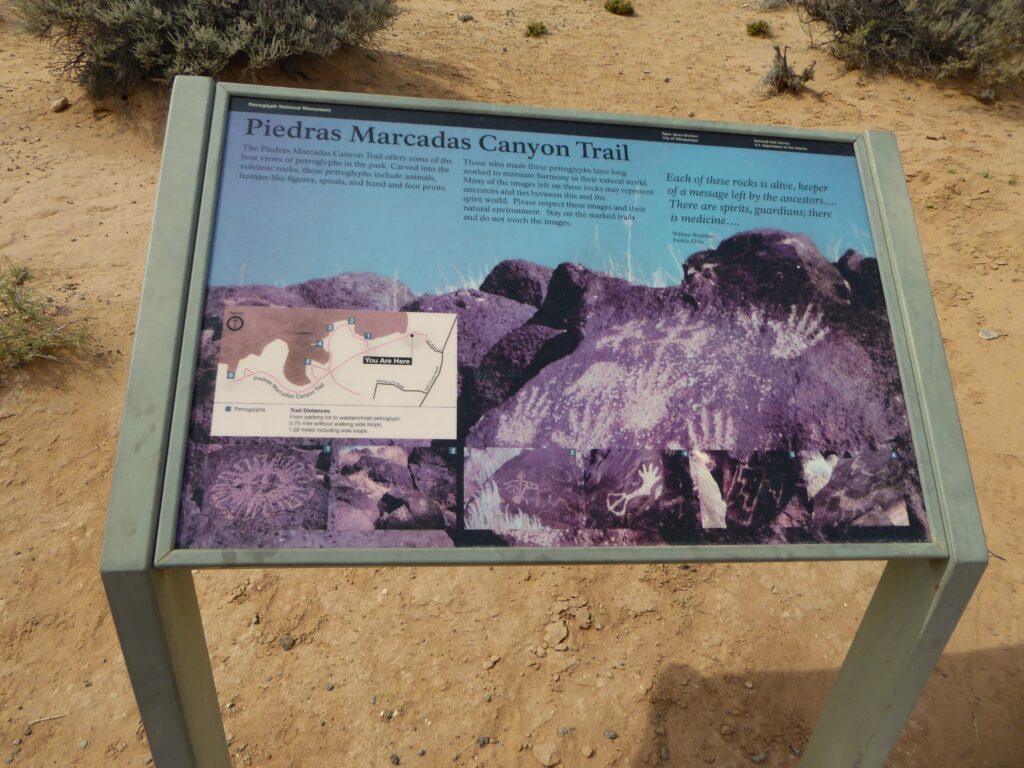
The Piedras Canyon Trail is a 1.5 mile round trip undeveloped trail system. You find anywhere from 300-500 petroglyphs.
The trailhead is next to a Valvoline Motor Oil Change station right within the city. It is an unassuming entrance for a hike featuring some stunning ancient petroglyphs.
There are no water stations or restrooms along the trail. Also, there is no shade along the trail.
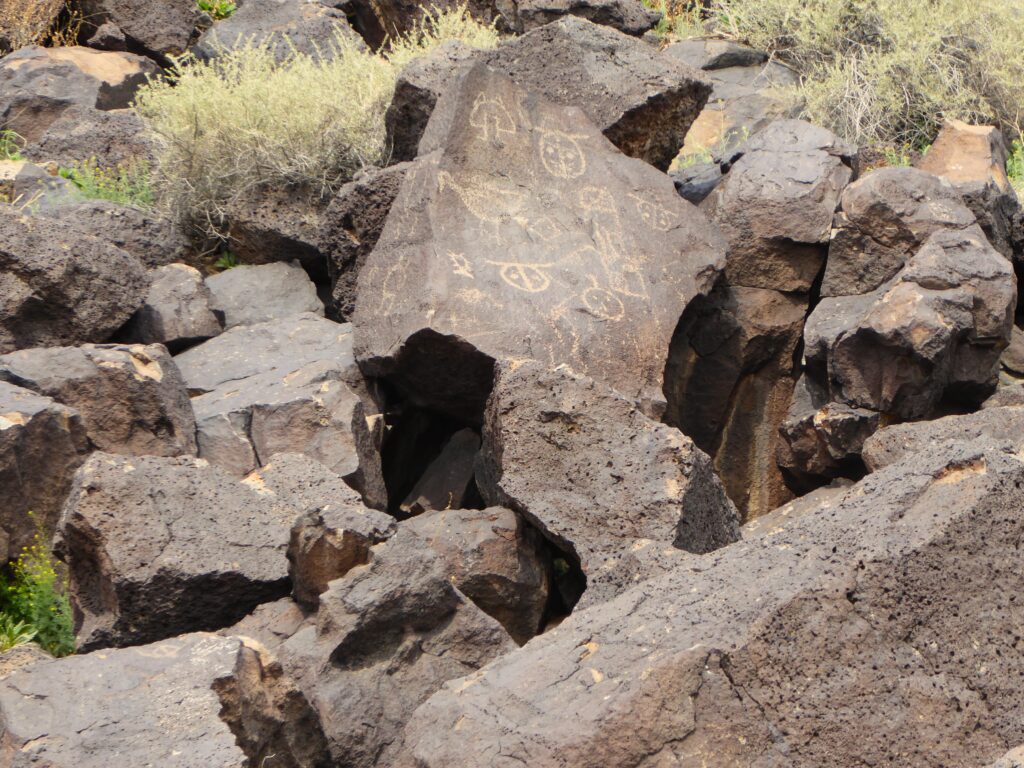
Unlike the Boca Negra Canyon trail, the Piedras Marcadas Canyon is a mostly flat walking trail. Since you are not hiking up a hillside, the paths are much wider and more accessible to those with disabilities.
Finding Beauty in the Desert
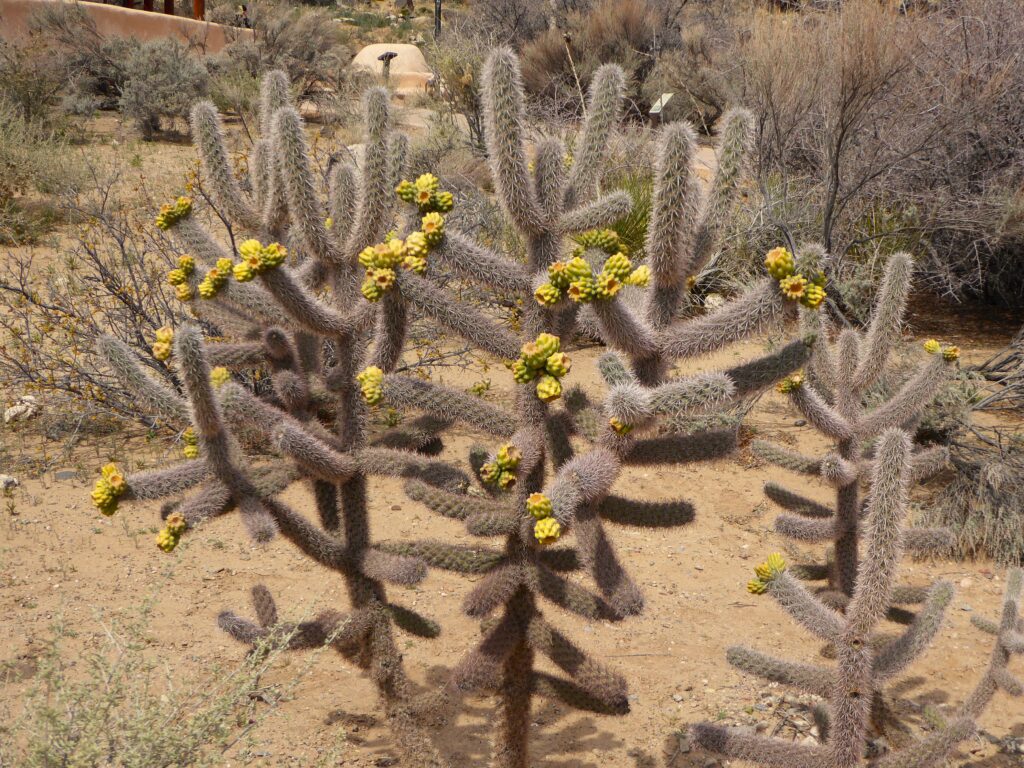
Petroglyph National Monument is in a rather unassuming landscape. You are in the middle of a desert landscape. There is not a lot of contrast between the browns of the trails and the black basalt rock.
However, even in a landscape such as this, there are always amazing plants and animals to be found. While my group did not see any wildlife on our visit (thankfully there were no rattlesnake sightings), we did find dashes of color among the many plants and flowers along the trails.
That’s one of the things I most enjoy about visiting national park sites. While you may marvel at the hundreds of petroglyphs at this monument, you also see vegetation, volcanos, and so many other things.
Our stay at the monument was only about half a day long. But, that doesn’t mean we exhausted all there was to see and do at the park. We left one trail unexplored. We could have hiked deeper into the Volcano areas. There were many things left to do and explore.
Maybe we’ll do so on a return trip to Petroglyph National Monument.
You May Also Enjoy:
Our look at the Balcony House Tour at Mesa Verde National Park.
See the Ancestral Manitou Cliff Dwellings in Colorado.
Guide to the Mayan Ruins of San Gervasio in Mexico.
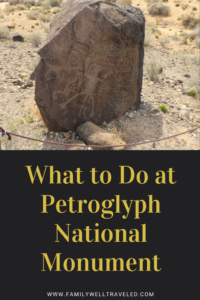
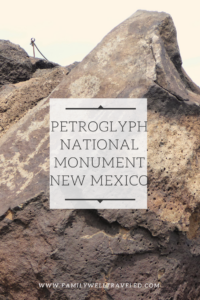
All photos and content are by Family Well Traveled and use of photos or content without permission will result in legal action.

The Petroglyph National Monument is so cool! We’re adding it to our New Mexico bucket list. We have a Petroglyph National Monument in our state of Minnesota, and they have super weird hours, but you’ve inspired me to ‘carve’ out time to get there. This is fascinating. I love that these have been preserved.
We were really impressed with the amount of glyphs and the variety in New Mexico. It’s definitely worth a visit if you’re in the area.
I spent a week in Albuquerque visiting a cousin, and really enjoyed my stay in the city. She took me on all the tour of the sites, including visits to Santa Fe, Los Alamos, a puebla, and some mountain peak. But somehow, we missed visiting this place. Looks fascinating! If I ever make it back to Albuquerque, I’ll have to ask my cousin to take me there.
That’s funny. But there is a lot to see and do in the region.
I have never heard of this before, but it looks very interesting. Hopefully I visit it one day I come to New Mexico!
Yes, I hope you get that opportunity.